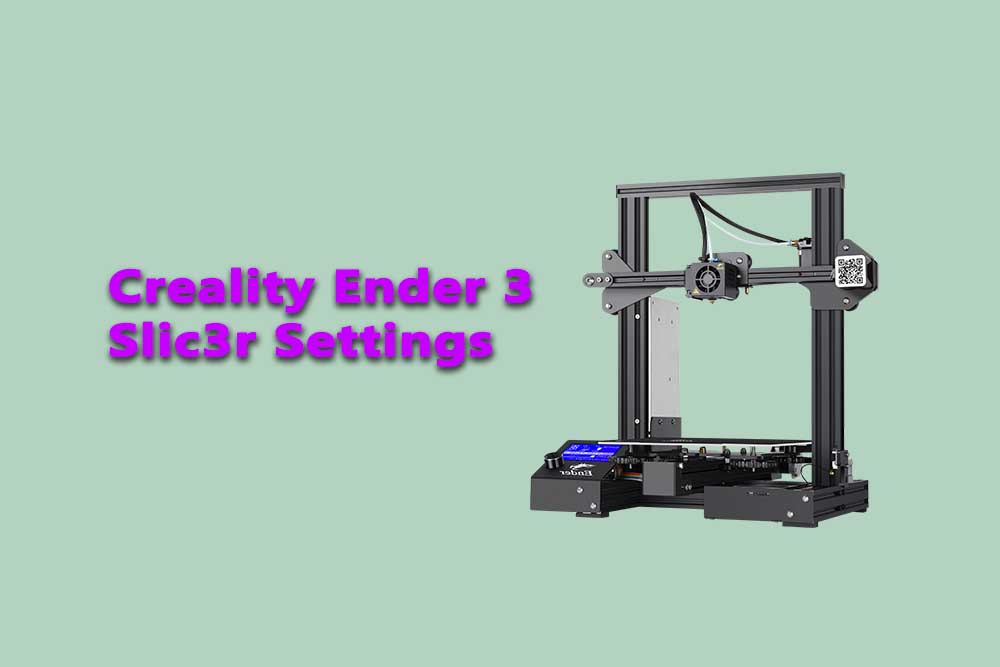What is slic3r:
Slic3r is a 3D printing slicing program. It takes a 3D model (in STL format) and creates a path for the printer to follow, called a G-code file. Slic3r is open-source software, licensed under the AGPLv3 license.
Slic3r has two main components:
The graphical user interface (GUI), which allows users to load STL files, view them in 3D, and configure slicing settings. The engine, which converts STL files into G-code files.
Both components are available for Windows, macOS, and Linux. The GUI is also available for Raspberry Pi.
Why use slic3r:
Slic3r is a powerful and flexible tool for 3D printing. It offers many features, such as:
STL file import and export: Slic3r can import STL files and export G-code files.
3D view: Slic3r has a built-in 3D viewer that lets you see your model in 3D.

Multi-material printing: Slic3r can slice models that contain multiple materials.
Support for custom printer profiles: Slic3r supports custom printer profiles, so you can use it with any type of printer.
Layer-by-layer visualization: Slic3r can visualize each layer of the model, so you can see how it will be printed.
Print time estimation: Slic3r can estimate the print time of a model, so you can plan your prints in advance.
Material usage estimation: Slic3r can estimate the amount of material that will be used, so you can budget for your prints.
G-code generation: Slic3r can generate G-code files that can be used with any 3D printer.
Supports a wide range of printers and materials
How to use slic3r?
Using Slic3r is easy! Just follow these steps: 1. Install Slic3r 2. Open Slic3r and load your STL file 3. Configure your slicing settings 4. Generate G-code 5. Save the G-code file 6. Print! That’s it!
Configuring slic3r settings:
There are many settings that can be configured in Slic3r. These settings control everything from the quality of the print to the amount of material used.
The following is a list of some of the most important settings:
Layer height: This setting controls the thickness of each layer. Lower layer heights result in smoother prints, but take longer to print. A good starting point is 0.1 mm for ABS and 0.2 mm for PLA.
Infill density: This setting controls how much of the interior of the object is filled with material. Higher densities result in stronger prints, but take longer to print. A good starting point is 20% for ABS and 10% for PLA.
Perimeter speed: This setting controls the speed at which the perimeter (outer edge) of the object is printed. Higher speeds result in faster prints, but lower speeds produce better-quality prints. A good starting point is 30 mm/s for ABS and 50 mm/s for PLA.
Print time estimation:
Slic3r can estimate the print time of a model based on the configured settings. To do this, simply click on the “Estimate Print Time” button in the toolbar.
The estimated print time will be displayed in the bottom left corner of the window.
Advantages:
- Slic3r is a powerful and flexible tool for 3D printing.
- It offers many features, such as STL file import and export, 3D view, multi-material printing, and support for custom printer profiles.
- Slic3r can generate G-code files that can be used with any 3D printer.
- It supports a wide range of printers and materials.
- Slic3r is easy to use! Just follow these steps: 1) Install Slic3r 2) Open Slic3r and load your STL file 3) Configure your slicing settings 4) Generate G-code 5) Save the G-code file 6) Print! That’s it!
Disadvantages:
- Slic3r is a complex software with many features. This can make it difficult to use for beginners.
- It can be challenging to configure the settings for optimal results.
- Slic3r is not available for mobile devices.
Problems:
- I can’t seem to get the infill density setting to work correctly. Every time I try to print an object, the infill is either too dense or too sparse.
- I’m having trouble getting Slic3r to generate G-code files that are compatible with my 3D printer. What could be the problem?
- I can’t seem to find the setting that controls the perimeter speed. Can you help me?
- The estimated print time is always different than the actual print time. Why is this?
- I’m having trouble saving my G-code files. Every time I try to save them, I get an error message saying “Access denied.” What could be the problem?
Solution:
- Make sure you have the latest version of Slic3r installed.
- Check the documentation for your 3D printer to make sure it is compatible with Slic3r.
- The perimeter speed setting can be found in the “Print Settings” tab, under “Extruder 1”.
- The estimated print time is based on the configured settings and may not be accurate for your specific printer and material.
- Make sure you have write permission for the directory you are trying to save the G-code file in. You can check this by opening the directory in a text editor and looking for the “w” permission in the first column.
Slic3r can generate G-code files that can be used with any 3D printer. It supports a wide range of printers and materials.
FAQ’s:
1. What are the system requirements for Slic3r?
1. The system requirements for Slic3r are as follows: Windows 7/8/10, 64-bit only; 2 GB RAM; 300 MB hard drive space; .NET Framework 4.5 or higher.
2. How do I install Slic3r?
2. To install Slic3r, simply download the latest version from the official website and run the installer.
3. How do I use Slic3r?
3. To use Slic3r, first load an STL file into the program. Then, configure your slicing settings and click on the “Generate G-code” button. Finally, save the G-code file and print it using your 3D printer.
4. What are the advantages and disadvantages of Slic3r?
4. The advantages of Slic3r include its power and flexibility, a wide range of supported printers and materials, and ease of use. However, some disadvantages include its complexity and the need for accurate configuration settings.
5. What problems can occur when using Slic3r?
5. Some problems that can occur when using Slic3r include difficulty printing with the correct infill density or generating compatible G-code files.
6. How can I troubleshoot problems with Slic3r?
6. To troubleshoot problems with Slic3r, first check the system requirements to make sure your computer meets the minimum requirements.
Then, check the documentation for your 3D printer to make sure it is compatible with Slic3r. Finally, if you are still having problems, contact the support team for help.
7. Where can I get more help with Slic3r?
7. For more help with Slic3r, you can visit the official website or join the discussion forum. You can also contact the support team directly if you need assistance.

